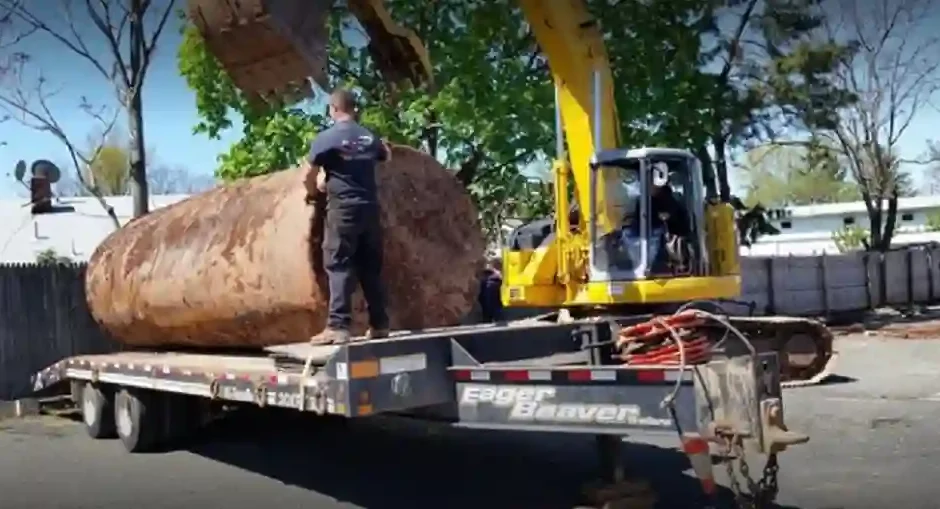Beneath the serene landscapes of countless homes, an unseen danger may be lurking – aging underground oil tanks. The potential risks associated with these buried relics necessitate not only vigilance but a proactive approach to monitoring and removal. Enter the world of tank trackers – a solution that combines advanced technology with environmental stewardship to safeguard properties from the potential hazards of underground oil tanks.
1. The Silent Threat Below: Aging Underground Oil Tanks
Many homes, especially those built several decades ago, were equipped with underground oil storage tanks to fuel heating systems. These tanks, however, were not designed to withstand the ravages of time indefinitely. Over the years, corrosion can set in, leading to leaks that pose environmental and health risks.
The challenge lies in the fact that these threats are hidden from plain sight. Homeowners might be unaware of a lurking danger beneath their property until it manifests in the form of soil contamination, property damage, or health issues. This is where tank trackers emerge as a proactive solution, offering a way to monitor the status of underground oil tanks.
2. Tank Trackers: The Technology Behind Monitoring
Tank trackers utilize cutting-edge technology to monitor the condition of underground oil tanks continuously. These devices are equipped with sensors that measure various parameters, including the tank’s oil level, temperature, and pressure. The data collected is then transmitted to a central monitoring system, allowing homeowners to keep a watchful eye on the tank’s status in real time.
The sophisticated nature of tank trackers provides homeowners with valuable insights into the performance and integrity of their underground oil tanks. Early detection of anomalies, such as unexpected oil level drops or unusual temperature variations, can be a crucial indicator of a potential issue. This proactive monitoring empowers homeowners to address problems before they escalate, mitigating the risks associated with aging oil tanks.
3. The Environmental Impact: Mitigating Potential Hazards
Beyond the convenience of real-time monitoring, tank trackers play a pivotal role in mitigating the environmental impact of aging oil tanks. By promptly identifying leaks or other malfunctions, homeowners can take swift action to prevent or minimize soil contamination. This proactive approach aligns with environmental stewardship, contributing to the preservation of local ecosystems and groundwater.
The capacity of tank trackers to detect issues early on also reduces the likelihood of extensive property damage. Timely intervention can prevent the spread of oil in the soil and safeguard the structural integrity of buildings and infrastructure, avoiding costly remediation efforts.
4. Compliance with Regulations: A Regulatory Safeguard
Tank trackers not only offer a practical solution for homeowners but also contribute to compliance with local regulations. Many jurisdictions have stringent requirements for the monitoring and maintenance of underground oil tanks. Implementing tank trackers helps homeowners meet these regulatory standards by demonstrating a commitment to proactive monitoring and environmental responsibility.
Compliance with regulations is not only a legal obligation but also a measure that protects homeowners from potential fines and legal complications. Tank trackers, by providing a transparent record of monitoring activities, offer a valuable tool for homeowners to navigate the complex regulatory landscape associated with underground oil tanks.
5. Transitioning from Monitoring to Removal: A Seamless Process
While tank trackers offer an effective means of monitoring, they are also a crucial tool in the decision-making process when it comes to removal. Continuous monitoring data helps homeowners assess the overall health of the underground tank, providing insights into its remaining lifespan and the urgency of removal.
When the time comes for removal, the data collected by tank trackers can inform the removal process. It can guide professionals in planning the extraction, ensuring that potential hazards are minimized, and the removal is conducted in compliance with environmental regulations. This seamless transition from monitoring to removal underscores the comprehensive role that tank trackers play in managing the lifecycle of underground oil tanks.
6. Investing in Peace of Mind: Tank Trackers as a Wise Choice
For homeowners grappling with the uncertainty of aging underground oil tanks, tank trackers represent an investment in peace of mind. The proactive monitoring they provide not only safeguards the property and the environment but also alleviates the stress associated with the unknown.
Choosing to install tank trackers is a decision that goes beyond convenience; it is a strategic move toward responsible homeownership. By staying ahead of potential issues, homeowners can make informed decisions about the maintenance, repair, or removal of their underground oil tanks, ensuring that their property remains a safe and environmentally conscious space.
Conclusion:
In the realm of underground oil tanks, where potential hazards are hidden from view, tank trackers emerge as guardians of property and environment. The technology they employ transforms the monitoring and removal process into a proactive, data-driven journey. From real-time insights into the tank’s condition to facilitating compliance with regulations, tank trackers offer a comprehensive solution for homeowners navigating the challenges associated with aging underground oil tanks. As the silent guardians beneath the surface, tank trackers play a crucial role in ensuring that properties remain safe, clean, and environmentally responsible.



